written by Beckie of beckiegkengle.com
Have you ever wondered what the difference is between a cropped-sensor (DX) camera body and a full-frame (FX) body (besides just the model numbers and the obvious physical size difference of the body), and which one will suit your needs best? I hope to be able to explain that to you today.
Sensor size refers to the size of the sensor that your camera has. A full-frame (FX) sensor is equal to a 35mm film sensor (24mm x 36mm). A cropped (DX) sensor is smaller than the full-frame. Below is a diagram of what you would see when you take the same image with the same lens at the same distance from subject on a full-frame camera versus a cropped sensor camera. (these lines are approximate)
Canon has three different sensor sizes; full-frame as well as 1.3x and 1.6x cropped.
Sensor size is important when considering what camera to purchase that will best suit your needs. Full-frame sensors have distinct advantages as well as some disadvantages depending on your shooting situations. Generally, full-frame has significantly better image quality than a cropped sensor. Especially in regards to ISO performance!
I’ve noticed on my D700 that I can easily shoot at ISO-6400 without wondering if my image will end up being too noisy (ie: grainy). On my D300s, I would be lucky to shoot at ISO-1600! An FX body shines when it comes to low-light performance!
Some advantages of a cropped-sensor over a full-frame, are that because the sensors and lenses are smaller than the FX counterparts, your camera gear will be much lighter to carry around! Also much less expensive! (Although, it has been rumored that Nikon will be announcing the new D600 soon which is said to be a full-frame body at an entry-level price of approx $1500!!)
One of the most noticeable differences between FX and DX is when it comes to lens length! You’ve heard me say before “such and such lens is equivalent to such and such on a full frame”, here’s where that comes into play. I’ve created a list of the most popular lens sizes and their approximate crop factors if you’re using them on a cropped-sensor body.
I did my best trying to explain this, but if there’s still some confusion, please feel free to email me at beckie{at}beckiegkengle{dot}com, and I will do my best to answer your questions!
If you enjoyed reading my post and would like to follow more of my journey through life in photography, feel free to visit my blog or follow my Facebook page!
Thank you to Kelly, of Kelly Sapp Photography, for letting me snap a shot of her Canon 60D with my D700. 🙂

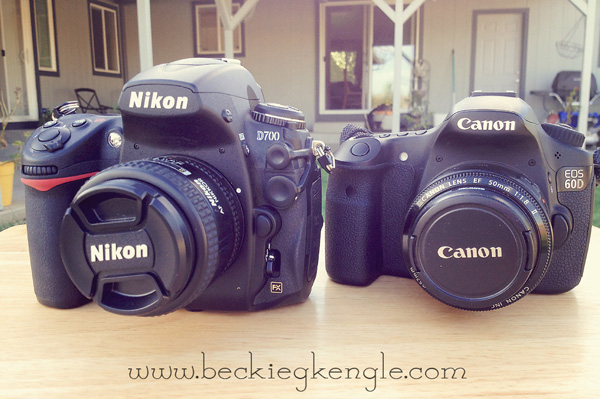

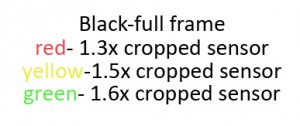


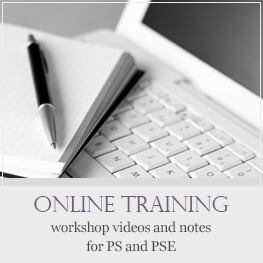
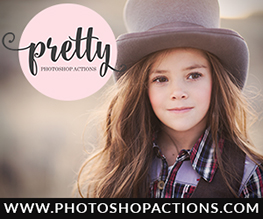

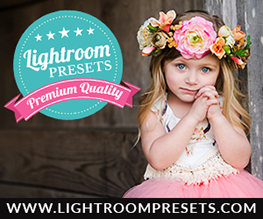
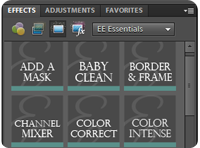

Perfect timing on this post for me, I was thinking about upgrading to a D700 (I currently have a D70s) for the full frame but I just found out it was discontinued (I am afraid of the D800 with all of the focus issues). Maybe I should see what materializes for the D600. Thank you!
Sally, where you are seeing the D700 as discontinued as I had not heard that. I still see it on both Nikon and Amazon websites, so you should be able to still purchase it. As far as the potential D600, I believe there were rumors of an announcement sometime this month! 😉
Beckie- if you go to the Nikon website, it is in the product archives and also on B&H and Adorama.com it shows discontinued. I am fearful of buying it online, as I would prefer to go to a camera shop to have that personal contact when making such a large investment and most places are out of it. What are your thoughts on refurbished cameras? I am just at the beginning of launching my business, but I don’t want my camera to hold me back from the most clear pictures. I feel so limited by the ISO (very grainy even at 1200) and I just don’t have that clarity that I yearn for with my current camera. I go back and forth on better lenses, but if I do go full frame, then don’t want to have to purchase more lenses. (sorry if this is too much detail :))
Wow! I had not seen that! Here are my thoughts…upgrading your glass is a great place to start! You can always upgrade your camera body later (when the D600 comes out or when the D800 prices drop some). Glass is a great investment, and in my opinion it is what I’d do first before upgrading your camera body. (what do you currently have?)
I currently have a D70s, 18-70mm f/3.5-4.5G IF-ED (kit lens) and a 70-300mm f/4-5.6G that I used with my film Nikon (my first SLR) way back when. What would you suggest (if you don’t mind).
I have the Canon 50d and a 50mm 1.4 lens..what would you suggest …really wish I had a full frame !!
Hi, Melissa. Actually, that is a really great combo! If you are wanting to stay with you 50D and get another lens, I think I would recommend the 35mm. 🙂
You are wonderful! I just purchased a Canon 5D Mark II and was having second thoughts when I got it home and one of my favorite lenses wouldn’t fit. Then while trying to order a replacement lens I was faced with “higher” numbers for the FX than had worked on the DX. Now, I see that in fact, the lens for the FX will be much more useful than the one on the DX. Thank you for putting all the info in “dummy” terms.
Hey there, Della. I’m so glad you found this post to be useful! If you have any questions, please feel free to ask! And have fun with that new camera! 😉
Thanks for the clarification! Would you happen to know if Nikon’s DX lenses would also function normally on an FX body? I’ve been considering upgrading to a full frame after I graduate PT school, but I wasn’t sure about the lens comparison. I hope I wouldn’t have to buy different lenses too. Thanks again!
Hi Malerie. I apologize for my delayed response. You can use DX lenses on an FX body, however, you’d have to put the camera in DX mode, and doing that decreases the quality in your image (I believe it’s like going from 12mp down to 5mp).
Oh wow. Thanks for the info. Well, now that I’ve seen the specs on the new D600, I really want to invest in that so I guess I’ll have to dive all in!
Thanks for all of this info. This is an excellent post. Pushes me more in the direction of a full frame camera 🙂
Can you help clarify something for me? I’m a pretty novice ph0t0grapher so please bare with me… have a Canon T3i with a crop factor of 1.6 and a 35mm prime lens. I like to take portraits of my family but have read that a 35mm lens is not a good close up portrait lens because of the distortion it creates. However from your chart I see that a 35mm lens simulates a 56mm lens on my camera compared to to full frame camera. Does that make my lens any better for closer portrait pictures or does the distortion still apply?
Hi, Melanie. Sorry for my delayed response. Yes, the 35 acts more like a 56mm on your camera. In which case, you should have little to no distortion like you might if you were shooting the 35 on a full-frame camera. You may still have an issue, though, if you get REALLY close, and that’s when the 50 might be better for you.
Great explanation! thanks! you’re a great teacher.
I dont know about you fellows but for me the layout of a blog is quite crucial, practically as a lot because the article itself. Furthermore I am a actual mug for online video clips.!!!. or, as a matter of truth, ANY media subject material in any way.